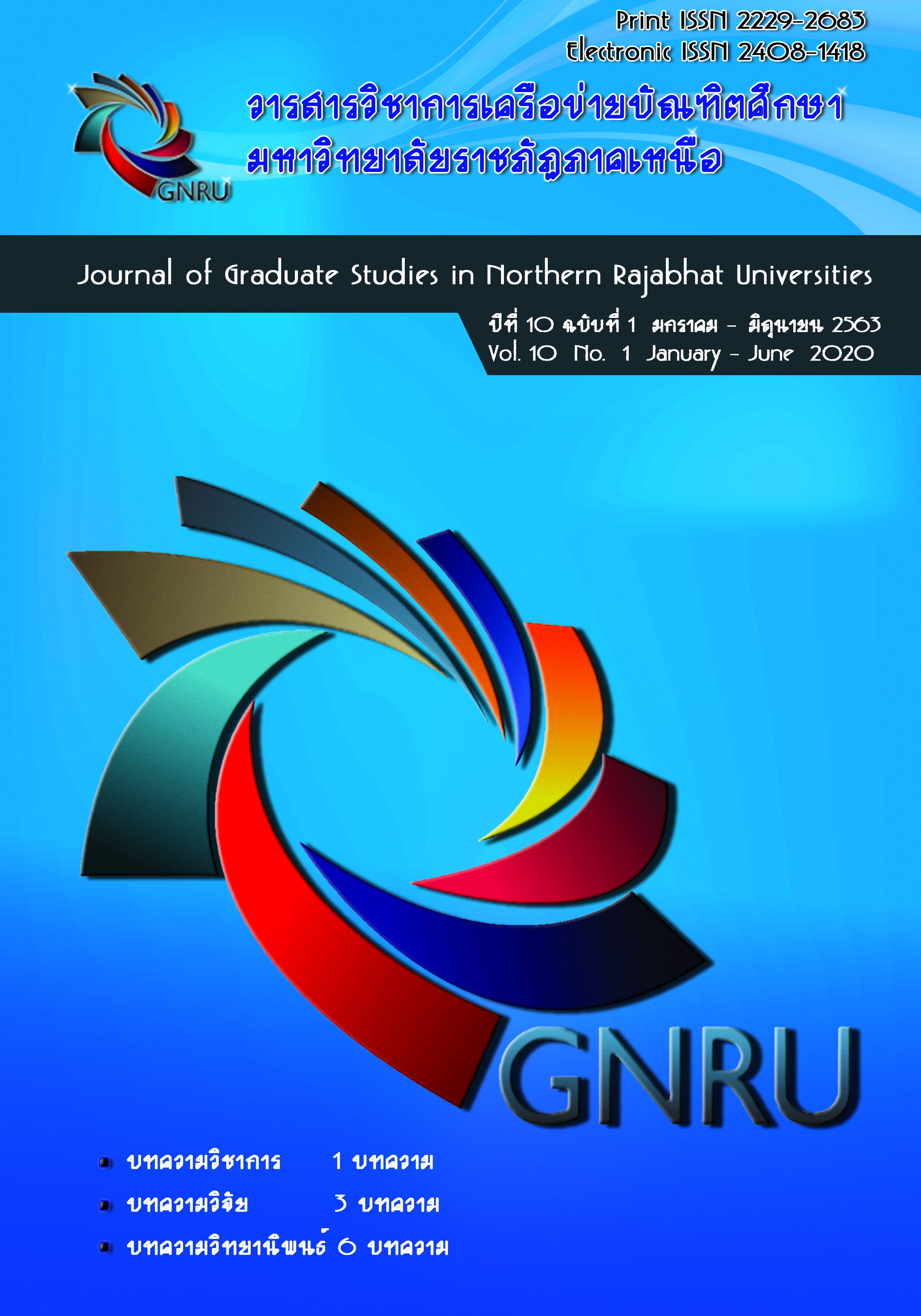การจัดการธุรกิจครอบครัว ด้วย 5 ขั้นตอนของการวางแผนคู่ขนาน Family Business Management by 5 Step of Parallel Planning Process (PPP)
Main Article Content
Abstract
ธุรกิจครอบครัว มีความแตกต่างจากธุรกิจทั่วไป เนื่องจากธุรกิจและชีวิตของสมาชิกครอบครัวต้อง
เกาะเกี่ยวเข้าด้วยกัน และเพื่อให้ทั้งสองส่วนสามารถยืนหยัดเคียงข้าง เป็นพลังในการผลักดันขับเคลื่อนไปพร้อมกัน บทความนี้ได้นำเสนอความหมายของธุรกิจครอบครัว แบบจำลองทฤษฎีระบบธุรกิจครอบครัว ซึ่งแสดงความสัมพันธ์สามมิติระหว่างครอบครัว ธุรกิจ และความเป็นเจ้าของและบทบาทของสมาชิกแต่ละคน ความสำคัญของธุรกิจครอบครัวในระบบเศรษฐกิจ และสาเหตุความล้มเหลวของธุรกิจครอบครัว ที่สำคัญคือ การนำเสนอกระบวนการวางแผนคู่ขนาน ซึ่งเป็นเครื่องมือที่จะช่วยเชื่อมโยงความปรารถนาของครอบครัวและเป้าหมายของธุรกิจเข้าด้วยกัน ผ่านการสร้างค่านิยมของครอบครัวและวัฒนธรรมทางธุรกิจ การสร้างวิสัยทัศน์ของครอบครัวและธุรกิจ การพัฒนากลยุทธ์ของครอบครัวและธุรกิจ การลงทุนในทุนมนุษย์และการเงิน และการกำกับดูแลครอบครัวและธุรกิจ โดยได้ยกตัวอย่างธุรกิจครอบครัวที่ใช้การวางแผนคู่ขนานแล้วประสบความสำเร็จ
Family business is different from other business. With the business and life of family members hooking up together and to enable both parts to stand side by side as the driving force at the same time. This article presents the definition of family business. The model of family business system theory, which shows three-dimensional relationships between family, business, and ownership and the roles of each member. The importance of family business in the economy and the cause of failure of family business the key is to present a parallel planning process. Which is a tool to help connect family wishes and business goals together. Through the creation of family values and business culture creating family and business visions Family and business strategy development Investment in human capital and finance and supervising family and business with examples of successful family businesses that use parallel planning
Article Details
References
By. (2015, March 18). 10 ตระกูลมหาเศรษฐี ของสหรัฐอเมริกา: Pacific Telecommunication & Telephone. Retrieved December 19, 2019, from https://www.ptt.co.th/blog/?p=1684 และ https://www.cargill.com.
Carlock, R. S., & Ward, J. L. (2001). Strategic planning for the family business: parallel planning to unify the family and business. New York: Palgrave MacMillan.
Carlock, R. S., & Ward, J. L. (2010). When Family Businesses are Best: The Parallel Planning Process for Family Harmony and Business Success. New York: Palgrave MacMillan.
Certo, S.C., & Peter J.P. (1991). Strategic Management: Concept and Applications. New York : Mcgraw-Hill.
Eriksson, T. (2008). Corporate Visioning: A Cross Comparison Between SMEs in Scotland and Sweden. MPhil Thesis, University of St. Andrews.
Fernandez-Araoz, C., Igbal, S., & Ritter, J. (2015). Leadership Lessons from Great Family Businesses. Harvard Business School.
Gersick, K.E., Lansberg, I., Davis, J., & McCollum. (1997). Generation to Generation. Harvard Business School Press, Boston: Massachusetts.
Goodstein, L.D.,Timothy M.N., & Pfeiffer, W.J. (1993). Applied Strategic Planning: How to Develop a Plan that Replay Works. California: P Feiffer Company.
Happywonder. (2019). Family secrets. Retrieved November 1, 2019, from
https://familysecretsthailand.utcc.ac.th/106problems-7.html.
Hofstede, G. (1997). Cultures and organization: Software of the mind. New York: McGraw-Hill.
KPMG and Family Business Australia. (2015). Family business: Optimistic, entrepreneurial, open to disruptive technoloies. Family Business Australia, 1–26.
Longenecker, J.G., Morre , C.W., Petty, J. W., & Palich, L. E. (2006). Small Business Management. (13th ed.). Ohio: Thomson South-Western.
Mary C. (2005). Strategic Management in Action. New Jersey: Pearson.
Poza, E.J. (2007). Family Business. (2nd ed.). Canada: South-Western.
Poza, E.J. (2010). Family Business. (3rd ed.). Canada: South-Western.
Robbins, S.P. (2001). Organizational behavior. Upper Saddle River, New Jersey: Prentice Hall International.
Robert A.P., & David L. (2006). Strategic Management Building and Sustaining Competitive Advantage. Ohio: Thomson South-Western.
Schermerhorn, J.R. (1999). Management. New York: Wiley.
กระทรวงอุตสาหกรรม . (2559). ธุรกิจครอบครัว. สืบค้นเมื่อวันที่ 10 ธันวาคม 2562, จาก
https://www.industry.go.th/industry/index.php/th/knowledge/item/10603-2016-05-23-05-38-40.
นวพล วิริยะกุลกิจ, รอน ศิริวันสาณฑ์ และภาคินี วิระยะรังสฤษฎ์. (2552). การสืบทอดธุรกิจครอบครัว. กรุงเทพฯ: สำนักพิมพ์การเงินธนาคาร.
รัชชานนท์ โชติพุฒศิลป์. (2562). Family Business: กงสี ดี ต่อเศรษฐกิจ. Economic Intelligence Center (EIC). สืบค้นเมื่อวันที่ 1 ธันวาคม 2562, จาก https://www.scbeic.com/th/detail/product/6203
วัฒนา วงศ์เกียรติรัตน์และคณะ. (2548). การวางแผนกลยุทธ์ ศิลปะกำหนดแผนองค์กรสู่ความเป็นเลิศ. กรุงเทพมหานคร: บริษัท อินโนกราฟฟิกส์ จำกัด.
สถาบันเพิ่มผลผลิตแห่งชาติ. (2555). เกณฑ์รางวัลคุณภาพแห่งชาติปี 2555-2556. กรุงเทพฯ: พงษ์วรินการพิมพ์.


